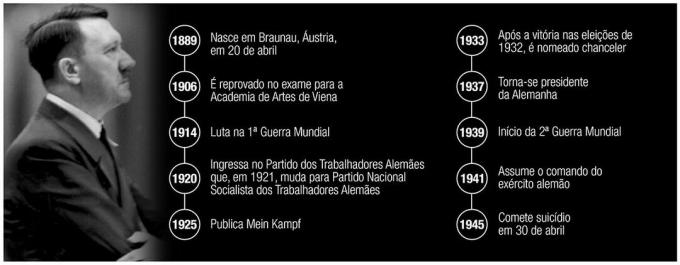Spanish artist Joan Miró is one of the great names in 20th century painting.
His work carries simplicity, balance and many imaginative elements.
With poetic compositions, often featuring chromatic explosions, Miró produced innovative work and became a reference in the surrealist movement.
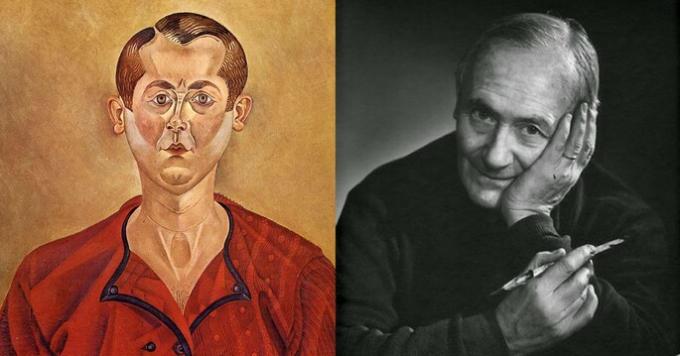
Miró Biography
Joan Miró i Ferrá was born on April 20, 1893, in the Catalan city of Barcelona. His family was well structured and valued ideas like work and material comfort, as well as discipline.
His father, Miquel Miró i Adzerias, was a successful goldsmith, and his mother, Dolors Ferrà, a housewife of Majorcan origin.
Childhood and youth of Miró
Miró had a lonely childhood in cosmopolitan Barcelona. He found joy when visiting family in Tarragona and Palma de Mallorca. There, he could enjoy the contact with nature, which fascinated and inspired him in his first children's drawings.
The shy Joan showed no enthusiasm for formal school learning, being interested only in drawing lessons. Because of this, his parents took him out of school in 1907, at the age of 14, and encouraged him to pursue a career in commerce.
Beginning of artistic studies
At the same time, Miró enrolled in the School of Fine Arts in Barcelona, despite his parents, who in 1910 they interfered again in his son's career, getting him a job in the field of accounting.
This situation shook Miró, who fell ill with depression and typhus. After this event, the family sends him to Tarragona. There, Miró manages to recover and finally decides to dedicate himself to art.
He then studied at the Galí Academy, which discussed the modern avant-gardes of art and encouraged him to develop sensitivity.
After completing his studies, Miró continues his search and artistic production. In 1918, he held his first solo exhibition. With canvases inspired by Fauvist, Cubist and Futurist movements, the show was not well accepted by the public.
The artist then begins a phase with influence on oriental prints and artists such as Henri Rousseau, one of the forerunners of naive art.
Joan Miró and surrealism
In 1920, Miró met Paris and the following year he moved there, the capital of artistic effervescence. He became involved with the Dada movement and was influenced by other artists, such as Giorgio de Chirico.
Later, he comes into contact with the surrealists and learns about Sigmund Freud's psychoanalytic theories, thus joining this current.
However, he maintains his autonomy and discretion, not participating in the heated discussions with the other members of the group, which generates some mistrust between them.
Anyway, Miró even stated about surrealism:
In contact with the surrealists, I understood one thing and that's what counts for me: the need to transcend painting.
dream paintings
Between 1925 and 1927, the painter began a series of simpler works towards abstraction, which became known as "dream paintings".
As outstanding features we can highlight: unique elements, such as spots, color circles, arabesques or simple brush strokes. In 1928, Miró went back to looking for inspiration in the classics.
other languages
Later, with the economic crisis that sets in, with the crash of the New York Stock Exchange, Miró goes through financial difficulties.
By this time he was already married to Pilar Juncosa and they both spent more time in Spain than in Paris. So much so that, his only child, Maria Dolors, was born in Barcelona, in July 1930.
The years between 1929 and 1931 were difficult for the artist, who "abandoned" painting and started to dedicate himself to other languages, such as collages and drawings.
In 1932, Miró returned to live in Barcelona and, in 1934, met the renowned painter Wassily Kandinsky.
During this same period, he began a series of works entitled "wild paintings", where he displays misshapen and frightening figures, an announcement of the hard times ahead with the Spanish Civil War and World War II. At this point, he decides to return with his family to Paris, fleeing the conflict.
From 1944 onwards, Miró began to produce pieces in ceramics and sculpture as well, which became part of his language.
Consolidation and recognition of Miró
The prestige and recognition actually came in the 40's, in the USA. There, the young painters come into contact with the work of the Catalan and enjoy it a lot.
In this way, he was the first artist from the European avant-garde to exhibit in the USA. In the 60s and 70s, his production was already famous around the world.
At that time, Miró was increasingly interested in defending Catalan culture, as General Franco's government sought to stifle cultural manifestations of Catalan origins. In 1975, he opened the Joan Miró Foundation in Barcelona.
Joan Miró dies at the age of 90, on December 25, 1983, in Palma de Mallorca, leaving a priceless legacy.
Works by Joan Miró
We selected some important works by Joan Miró, displayed chronologically. Check out!
1. The farm (1921-1922)
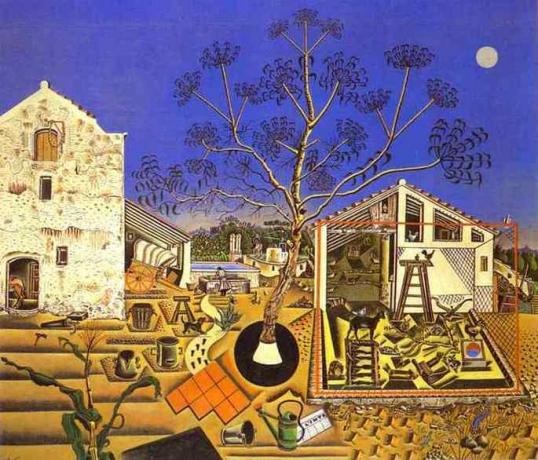
2. The Wine Bottle (1924)
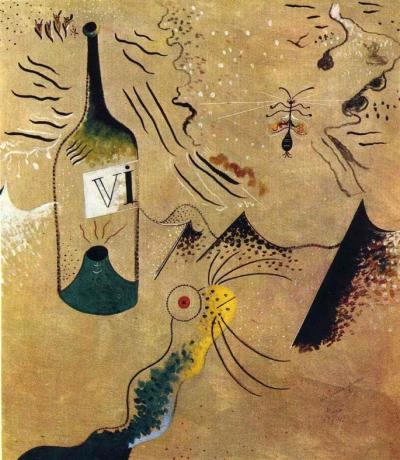
3. The Harlequin Carnival (1924-1925)
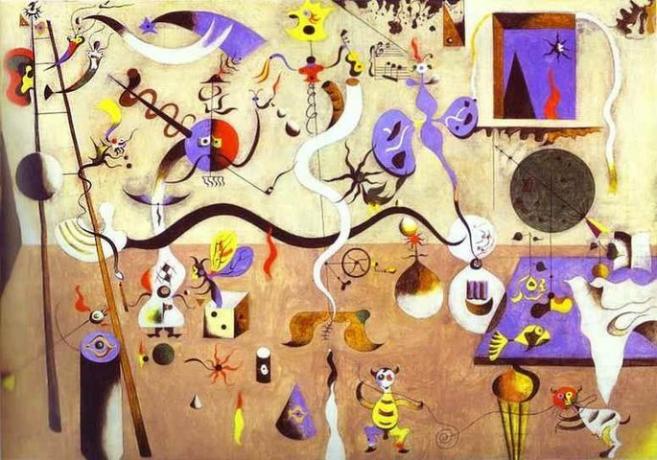
4. Composition (1933)

5. Woman and Dog before the Moon (1936)
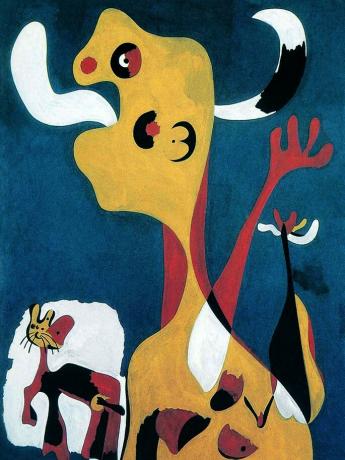
6. The beautiful bird deciphering the unknown to a couple of lovers (1941)

7. Women and Birds at Dawn (1946)
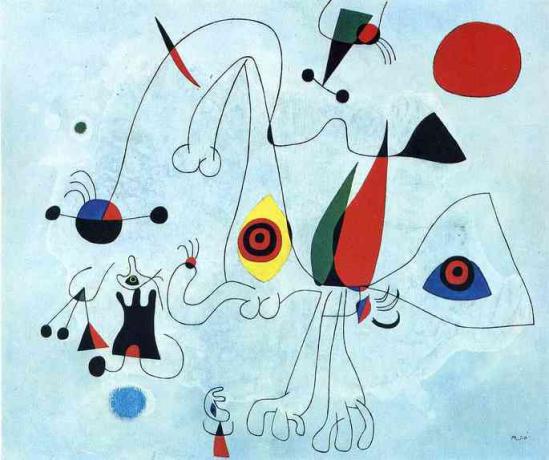
8. Characters and Dogs in the Sun (1949)

9. The Gold of the Heavens (1967)

10. Woman, Bird and Star (1966-1973)

Video about Joan Miró
In 2015, there was an exhibition by Joan Miró in São Paulo, at the Tomie Ohtake Institute. See what the curators said about the artist's output at the time.
Bibliographic references
Folha Collection - Great Masters of Painting



